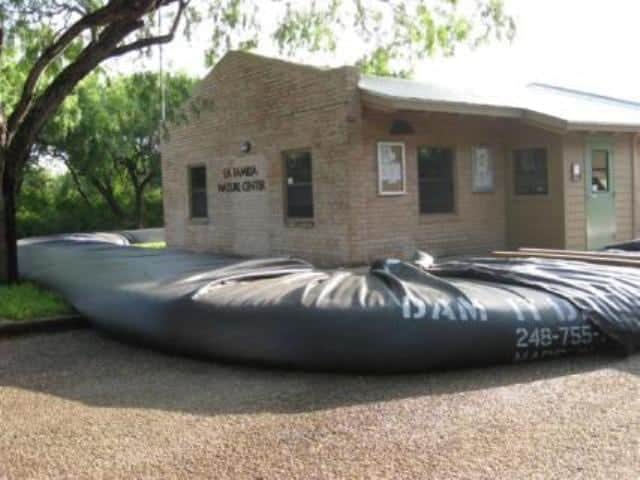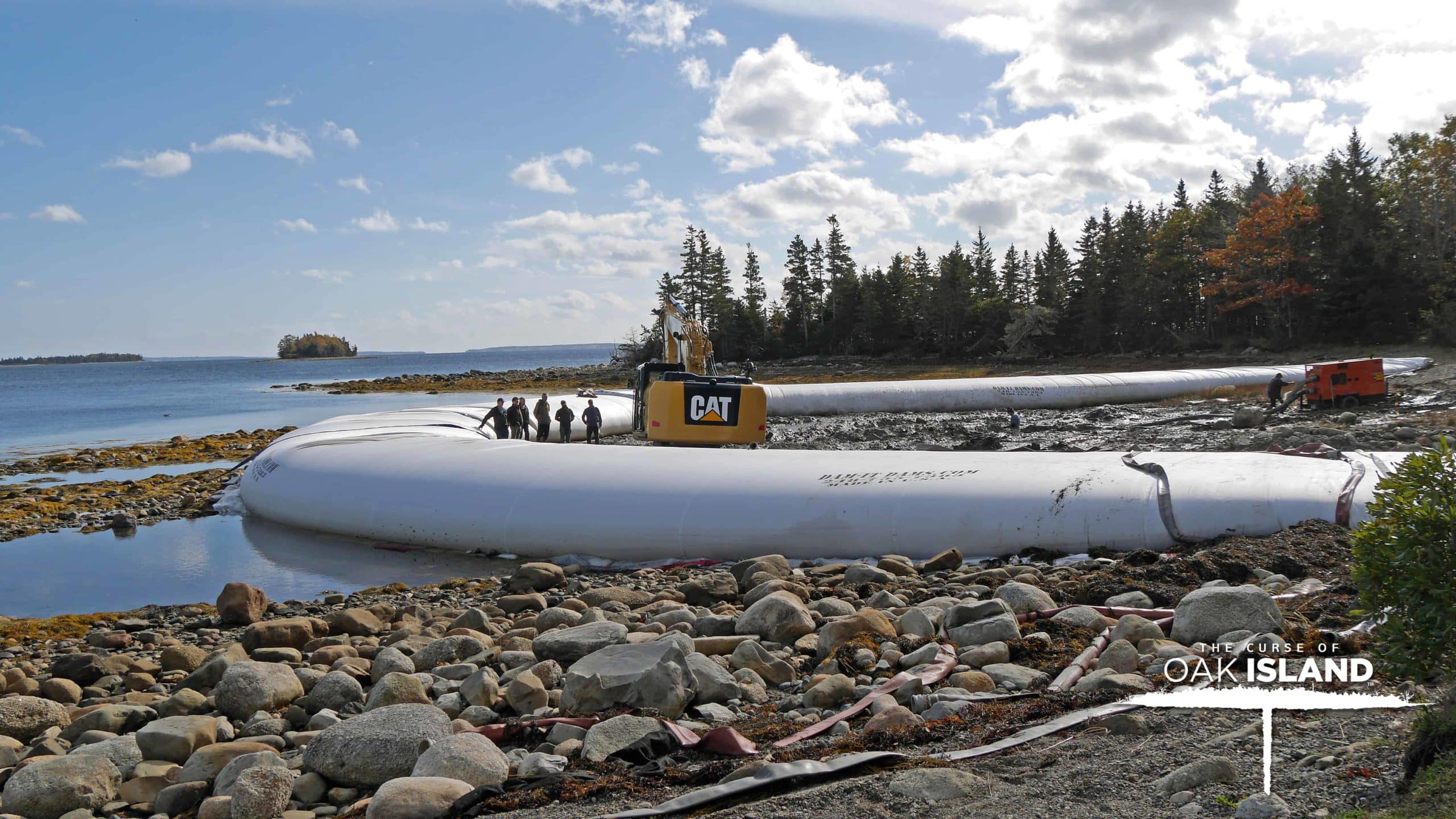The Best Way to Protect Your Home
Residential flood barriers are becoming increasingly important to protect your home from rising water levels. Due to the massive aftermath of 2018 hurricane season in tandem with the much debated issue of global warming (or greenhouse effects), many have found their neighborhoods and communities submerged in devastating levels of flood water or the consequences of flood waters. Flooding is considered to be one of the most common and expensive natural disaster in the United States. Because of that fact, many experts recommend residential floor barriers to be installed in homes and structures for the safety of residents and businesses.
The erosion of buildings due to alarmingly high numbers flooding events have become more prevalent and, with this in mind, effective home flood protection barriers are needed.
If the proper actions aren’t taken, you run the risk of, not only damaged and destroyed infrastructure, but also irreparable ruin to the possessions inside the building; Any items not lost to the flood stand a chance of developing mold that is soon to follow and destroy further.
Without proper precautions, after the flood, you face the painstaking task of tearing down walls, replacing soaked and soiled insulation, ripping out flooring, and replacing your entire electrical system. If you want to avoid the hassles associated with floods, now’s the time to look into getting home flood protection barriers. The cost of not being prepared is far greater than the cost of an efficient system!

Do You Need Home Flood Protection?
Protecting your home, belongings, and loved ones from flooding can be a huge cost saving measure for you and your family. Temporary barriers are often a better solution because they are more economical, and don’t leave a permanent and aesthetic altering mark on your property as compared to a permanent barrier.
Using Residential Flood Barriers to Avoid Flood Damage
The best way to avoid water damage is to stay above water. The elevation of the property is the only margin of safety when it comes to floods. Once the water reaches the level of your floor, there will be significant damage, even with so little as an inch of flood water.
Building a home at a higher elevation, though a preferable choice, doesn’t make the home “flood-proof” and isn’t always an option. Even located on a hill, there is a chance of future flooding and run-off, which is what makes it so important to protect their property from future disasters.
Anchor and Raise Equipment
Air conditioning units, generators, and fuel tanks must be anchored in a location higher than the known flood level. Fuel tanks that are not anchored can break free, and severed supply lines can contaminate the surrounding area causing damages and threats too severe and varied to name. Generators and other electrical power units should not be placed at ground-level. They will become useless when they are inundated with flood water. Not only will you be soaked in flood water, you will be powerless as well, not to mention the threat of electrocution should power continue through the machinery during the immersion in water.
Find Out How Water Flows Around Your Property
The angle of the ground that directs water away from your house is known as slope or grading of the land. The best scenario is when water drains away from the structure. You can simply observe the spots that accumulate water during an average rainstorm to determine low points. If the street is prone to standing water during an ordinary rainstorm, you should consider getting a residential floor barrier in order to safeguard your home and business.
Change Height of Electrical and Climate Systems
Make sure that your electrical wiring, sockets, switches and circuit breakers are at least a foot above the estimated flood level. This is not always an option when purchasing a home, but it is well worth the cost of rewiring in order to ensure your safety. You should also consider modifying the water heater, furnace, and other indoor equipment so that they are above the standard flood level.
Change Water Valves
Sewage can back up into your home when the sewer system gets overwhelmed by an abundance of water. A great way to prevent the horrific result of wading knee-deep in sewage and waste is to install an exterior back-flow valve. Experts recommend the use of gate valves which are operated by hand and are considered much stronger compared to standard check or flap valves that open automatically to allow water to flow out and close when water tries to enter. Gate valves must be installed on all pipes that enter the house.
Renovate the Home
In cases where flooding is a regular occurrence and moving is not a feasible option, you should consider retrofitting the home to make it as close to flood-proof as possible.
One of the recommendations is to raise the home on columns that will make the lowest floor above the estimated flood level. Another way to keep flood waters out is to install foundation vents that let water flow through the building. You will need at least two vents on different walls. You should also apply water-proofing measures to prevent floodwaters seeping in through the walls of your home.
Residential Flood Barriers as a Temporary Solution
Lastly, purchasing and installing temporary residential flood barriers is a wonderful and efficient step in flood-proofing your home. They don’t need to be installed on a permanent basis, as the barriers may decrease the aesthetic value of your home and permanent barriers may be too costly.
It is important that you buy residential flood barriers that allow you to use water instead of sand because water-filled barriers will not have a huge environmental imprint, they are reusable, and can lower your carbon footprint, particularly those that uses on-site water. There are many disadvantages to using the standard and widely known sandbag. That is explained in other articles and blogs.
Among the flood control solutions, a residential flood barrier is the most cost-effective solution. You can find affordable flood barriers on the market, including our cofferdam that can help protect your home from flood waters.
When it comes to residential flood barriers, make sure you choose one that is lightweight and easy to set up or break down; it should be portable enough that will allow you to place it without having to hire professionals for assistance. All these characteristics are found in Dam-It-Dams residential flood barriers.
Why Invest In a Cofferdam?
Grand Blanc-based Dam-It Dams, Inc., the manufacturer of the home flood protection barriers, has won innovative product awards for their portable on-site water-filled dams. When you buy our cofferdam, you are investing in the future; the future of your homes increased safety from flood damage as well as the future of our durable products.
Why Opt for Temporary Flood Barriers for Homes?
- Ease of Installation
The company brings the cofferdam(s) to where you need to repel rising water. The tubes will suck on-site water to inflate the dam slowly and evenly. Once the dam is full, it will rest firmly against the ground and then repel any water penetration. The main advantage is that the cofferdams leave little or no footprint, which eliminates the concerns of altering the aesthetic appearance of your property. - Ease of Removal
Temporary flood barriers are easy to remove when the area is no longer at risk. Our cofferdams, in particular, are deflated after the flood recedes. Once the barrier is removed, it leaves little to no footprint on the surroundings. Its portability and light-weight design means storing it is easy and if you move, you’re not abandoning your investment, because you can bring it with you. - Adaptable to Landscape
Our cofferdams are available in a variety of designs. So, they can conform to a wide variety of property designs. If you have a wide area that you need to protect, Dam-it Dams flood barriers for homes are expandable to any length. The company will easily link them to cover an area. In terms of other dimensions, the dams are available in 1’ to 12’ in height, 2’ to 23’ in widths. - Do-It-Yourself
There’s no need to hire outside constructors or additional assistance in order to set up or remove this product, due to its light-weight and portable nature. - Durability
Moreover, these barriers are made of industrial strength geo-textile materials that can endure treacherous climatic conditions and are puncture-resistant, and able to withstand tremendous levels of water pressure.
Protecting your property from massive flood damage requires choosing the right flood barrier for home and the best provider of flood barriers. This, in-of-itself, can be extremely stressful, but with Dam-it Dams, you’ve found the most reliable provider of cofferdams. Our company has extensive experience in providing one-of-a-kind cofferdam technology that is unbeatable on the market. They are affordable, expandable, portable, adaptable, and durable. Our services range from a complete installation to sales and rentals. You do not have to rely on the workforce the company provides, you can employ your own workforce to install it because our flood barriers for homes are just that simple!
Tips When Water Begins to Rise
- When water starts to rise, even if you do have residential flood barriers, you should:
Shut down your main circuit breaker to prevent any electrical mishaps. - Raise generator, fuel tanks, and other large immovable electrical-run units above ground-level.
- Unplug smaller electrical appliances to prevent electrocution.
- Consider installing an exterior back-flow valve for sewage (such as a gate valve, which is stronger than the standard check or flap valve).
- Move your rugs, furniture, and keepsakes to upper levels of the house. If that’s not possible, then make sure they are elevated off of the ground.
- Apply water-proofing products on the interior to prevent water seeping through the walls of your home.
Reducing Environmental Imprints Using Cofferdams
When using our temporary flood walls, it is not necessary to install permanent fixtures or to destroy your land to protect it. Because our dams use the on-site water, they leave little or no environmental impact. Dam-it Dams water filled flood barriers are designed to work in a non-invasive, temporary way. Therefore, our dams provide a temporary flood barrier without leaving a permanent footprint on the environment. Our dams are also even re-usable, further lowering our carbon footprint.
The general process of using our water filled cofferdams is outlined in this video:


